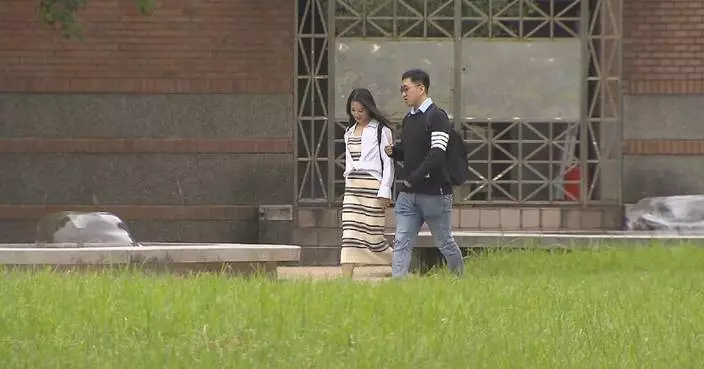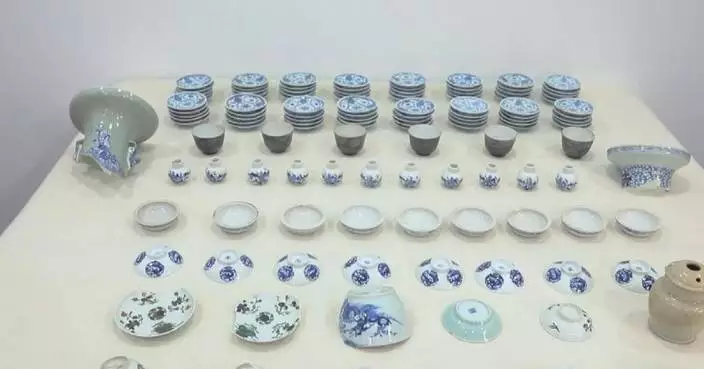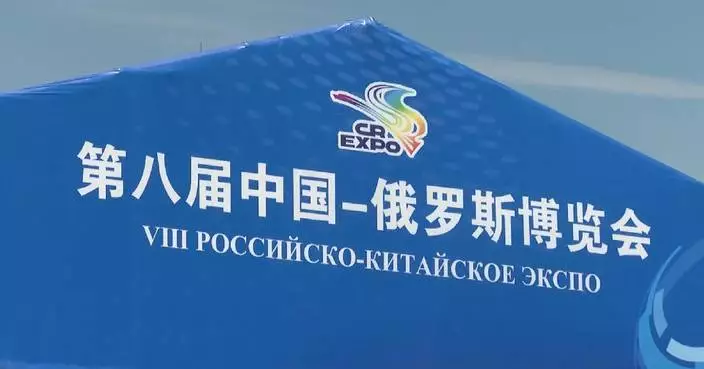French sinologist David Gosset, in a show released on Sunday, reminisced about the historic visit that China's former Premier Zhou Enlai and then French President Georges Pompidou paid to the Yungang Grottoes in 1973, which symbolizes the enduring friendship between France and China.
Despite their respective illnesses, the leaders' determination to elevate bilateral relations resonates through time, underscoring the importance of collective efforts in fostering global understanding, dialogue and cooperation, he said.
"It was in 1973, Premier Zhou Enlai was already sick, and the French President Georges Pompidou came to China. And it was a very intense visit, and Premier Zhou Enlai took Georges Pompidou to the north of Shanxi to visit the Yungang Grottoes. It's a beautiful site that I invite all the viewers to go to visit. And when I think about France and China, I think about this visit in Yungang Grottoes. That is an illustration of the ancient silk road, of these two great leaders that were working together. It was difficult also for the French President Georges Pompidou, because actually he was also sick. And, despite the tiredness of the two leaders, they were trying all their best to take the relations between the two countries at another level. When Zhou Enlai spoke French in 1973, he spoke French without any kind of accent, and I was also very impressed by this. And we don't need one person, we need a collection of people, and each individual has a role to play in the relationship between China and the world, China and Europe, and China and France," said Gosset.
Chinese President Xi Jinping started his state visit to France on Sunday at the invitation of his French counterpart Emmanuel Macron.
The visit marks the second state visit by China's head of state to France in five years and coincides with the 60th anniversary of the establishment of diplomatic ties between the two countries.
France is the first leg of Xi's three-European country tour which will also take him to Serbia and Hungary.

French sinologist recounts historic Zhou-Pompidou visit to Yungang Grottoes
Chinese scientists have recently worked together and rebuilt the face of an ancient Chinese ethnic minority emperor via cutting-edge DNA technology.
Emperor Wu of the Xianbei-led Northern Zhou Dynasty (557-581), also known as Yuwen Yong, was an ambitious leader who died at 36. He belonged to the Xianbei nomadic group, which originated from the Mongolian Plateau.
The tomb of the emperor was discovered in 1993 in a village of the city of Xianyang in northwest China's Shaanxi Province. His skull and bones were discovered during an excavation held in 1994 and 1995 at the site of his tomb.
In late March this year, scientists led by the Shaanxi Provincial Institute of Archaeology and the Institute of Archaeological Science of Fudan University managed to decode key features of the emperor and speculate about his cause of death. The emperor might have died from chronic arsenic poisoning due to long-term use of a pellet, which was believed by ancient people to achieve eternal life.
"First, the skeleton can be used to determine age. Second, in terms of age and gender, some pathological research can also be done to see if he had any fractures or other (diseases)," said Zhang Jianlin, a researcher from the Shaanxi Provincial Institute of Archaeology.
Obtaining high-quality genomic data is crucial for restoring the face. Through DNA paleogenomics techniques and optimized DNA extraction, database building and capture methods, more history was revealed.
"First, we have done the shorter fragments enrichment method, which is a DNA extraction method. In addition, we have developed some more sensitive database building method suitable for ancient samples with short fragments. You can regard it as a method to amplify the genetic signal, the extracted DNA. The third is that we have developed a capture method that is more suitable for this kind of highly degraded ancient samples. So we have optimized and improved our approach from three aspects at the same time," said Wen Shaoqing, an associate professor of the Institute of Archaeological Science of Fudan University.
The reconstructed face showed that Yuwen Yong had black hair, yellow skin and brown eyes, while his appearance was typical for people from East or Northeast Asia.
Wen said that with the help of the DNA technology, the accuracy of facial restoration can reach 90 percent.
"As for the accuracy of (facial restoration), the current situation is that if there is a skull as a basis, its accuracy will be relatively high," said Wen.

Scientists rebuild face of ancient emperor using advanced DNA technology










